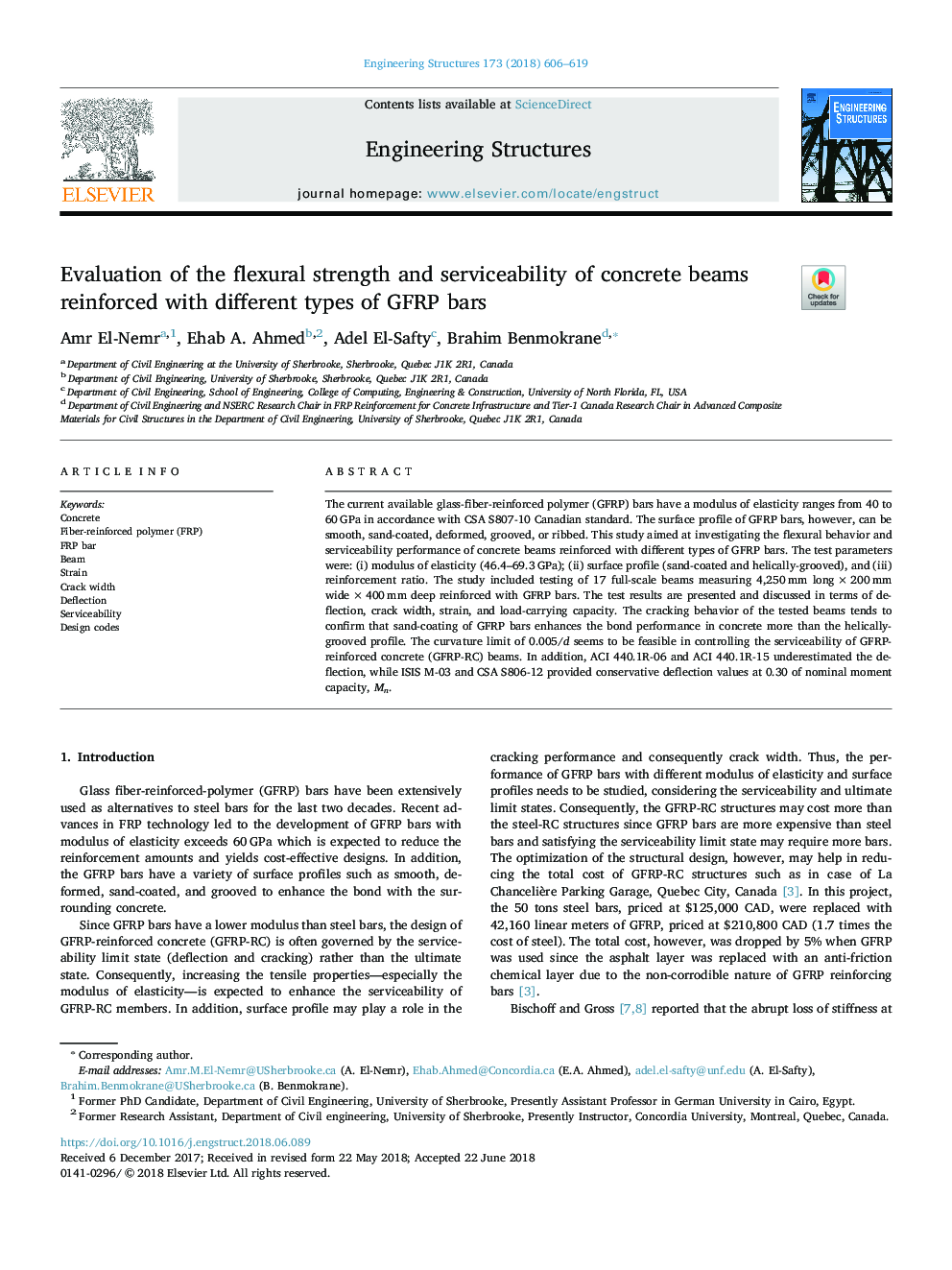| Article ID | Journal | Published Year | Pages | File Type |
|---|---|---|---|---|
| 6735653 | Engineering Structures | 2018 | 14 Pages |
Abstract
The current available glass-fiber-reinforced polymer (GFRP) bars have a modulus of elasticity ranges from 40 to 60â¯GPa in accordance with CSA S807-10 Canadian standard. The surface profile of GFRP bars, however, can be smooth, sand-coated, deformed, grooved, or ribbed. This study aimed at investigating the flexural behavior and serviceability performance of concrete beams reinforced with different types of GFRP bars. The test parameters were: (i) modulus of elasticity (46.4-69.3â¯GPa); (ii) surface profile (sand-coated and helically-grooved), and (iii) reinforcement ratio. The study included testing of 17 full-scale beams measuring 4,250â¯mm longâ¯Ãâ¯200â¯mm wideâ¯Ãâ¯400â¯mm deep reinforced with GFRP bars. The test results are presented and discussed in terms of deflection, crack width, strain, and load-carrying capacity. The cracking behavior of the tested beams tends to confirm that sand-coating of GFRP bars enhances the bond performance in concrete more than the helically-grooved profile. The curvature limit of 0.005/d seems to be feasible in controlling the serviceability of GFRP-reinforced concrete (GFRP-RC) beams. In addition, ACI 440.1R-06 and ACI 440.1R-15 underestimated the deflection, while ISIS M-03 and CSA S806-12 provided conservative deflection values at 0.30 of nominal moment capacity, Mn.
Keywords
Related Topics
Physical Sciences and Engineering
Earth and Planetary Sciences
Geotechnical Engineering and Engineering Geology
Authors
Amr El-Nemr, Ehab A. Ahmed, Adel El-Safty, Brahim Benmokrane,
